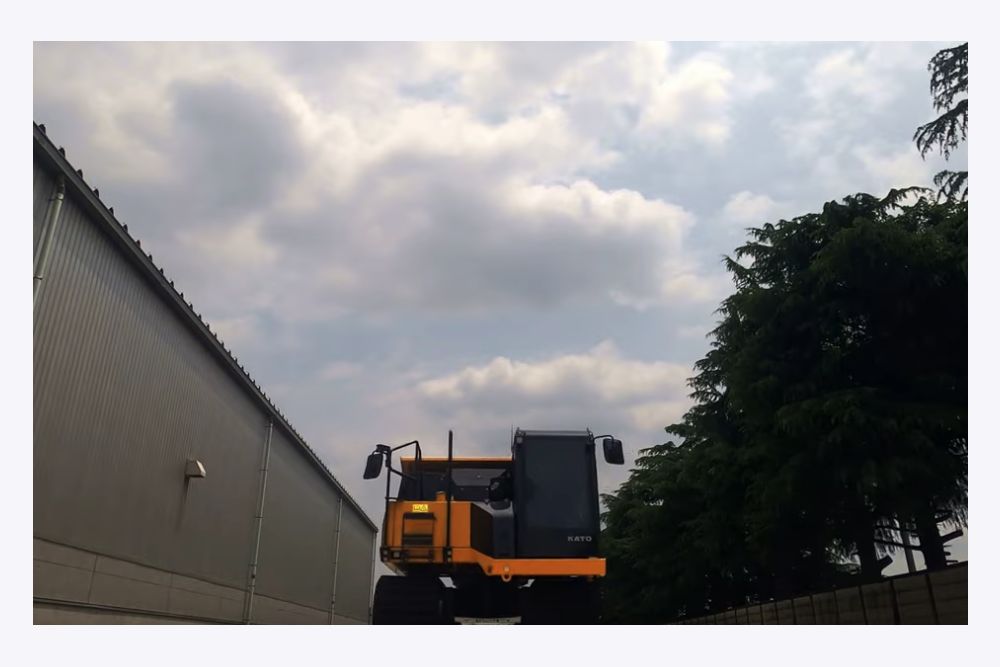
Kato launches high-efficiency track dumper
TRACKED dumpers are becoming increasingly used in construction and earthmoving as demands for greater work safety, calls for reduced environmental impact and access to difficult work sites challenge operators and magnify building costs.
The machines, once not a common addition to an earthmoving inventory, are also being developed by more manufacturers.
Japan’s longstanding equipment maker Kato, which has made crawler machines since the 1990s, recently expanded its crawler dumper range with the 7-tonne payload IC70R.
This new machine is now in Australia, available through Sydney-based Kato Works Australia.
The IC70R fits into the middle of the company’s five-model crawler carrier lineup.
It weighs 11.6-tonne and runs on a 188hp (140kW) Kubota diesel engine that is electronically controlled, a feature that Kato said significantly reduces the risk of engine overrun, making downhill travel much safer.
Kato said the benefits of the new design improve workplace efficiencies and ultimately reduce job costs, but the IC70R has far more positive benefits.
For the operator, the machine’s tracks allow it to navigate rough terrain with increased stability and traction that maximises safety.
Compared with a wheeled machine, the IC70R can operate on steep inclines or soft ground as the tracks distribute the weight of the dumper more evenly, reducing the likelihood of it getting stuck.
For congested work sites, the machine also shows its high manoeuvrability.
Tracked dumpers are more compact than rival wheeled dumpers as the tracks allow a tighter turning circle and the ability to pivot.
The tracks also distribute weight more evenly over a larger surface area, reducing the pressure on the ground to minimise damage to the soil and vegetation, making tracked dumpers ideal for use on sensitive terrain.
The Kato IC70R crawler carrier can rotate 360 degrees continuously, and the operator can quickly switch direction.
Kato said that the IC70R can dump a load with up to a 90-degree slewing angle, and the bed has a 3 cubic metre capacity.
Its manoeuvrability is shown by the ability for the operator to hit a travel operation changeover switch to reverse the steering direction and travel operations after rotating 180 degrees.
Compared with other machines, the new dumper also has a lower height and narrower width (5.5m long by 3m wide and 2.7m high) for easier transport and working in tight areas. This is 2.68m lower and 2.5m narrower than some rivals.
According to Kato, the IC70R can be ordered with full ROPS cabin or ROPS/TOPS canopy.
The cabin version comes standard with heating and air conditioning, a brush guard package and a multi-function monitor that shows fuel, DEF tank, rpms and voltage.
Both versions are controlled by joysticks, but a proportional foot pedal is optional. The left joystick controls travel and vessel, and the right joystick controls slewing.
Other features of the IC70R include:
Increased visibility from the cabin, and cameras that detect blind spots.
Traveling and slewing speed limited under certain conditions for increased safety, such as when the carrier is not fully retracted or the carrier is moving.
In energy-saving mode, engine rotation speed and pump flow are controlled to meet the best energy distribution, the company says. And while in neutral, idling mode kicks in to save fuel and produce less emissions.
Frequently used switches concentrated near the monitor.
The seat slides, reclines and has suspension.
Larger cover openings for easier access to filters, DEF tank and battery.
For a great deal on financing your new purchase, contact Australia's best reviewed finance broker on 1300 Credit (1300 273 348) today or visit CreditOne.com.au



